Home>Dining>Tableware>How Can You Clean A Wooden Dining Table?
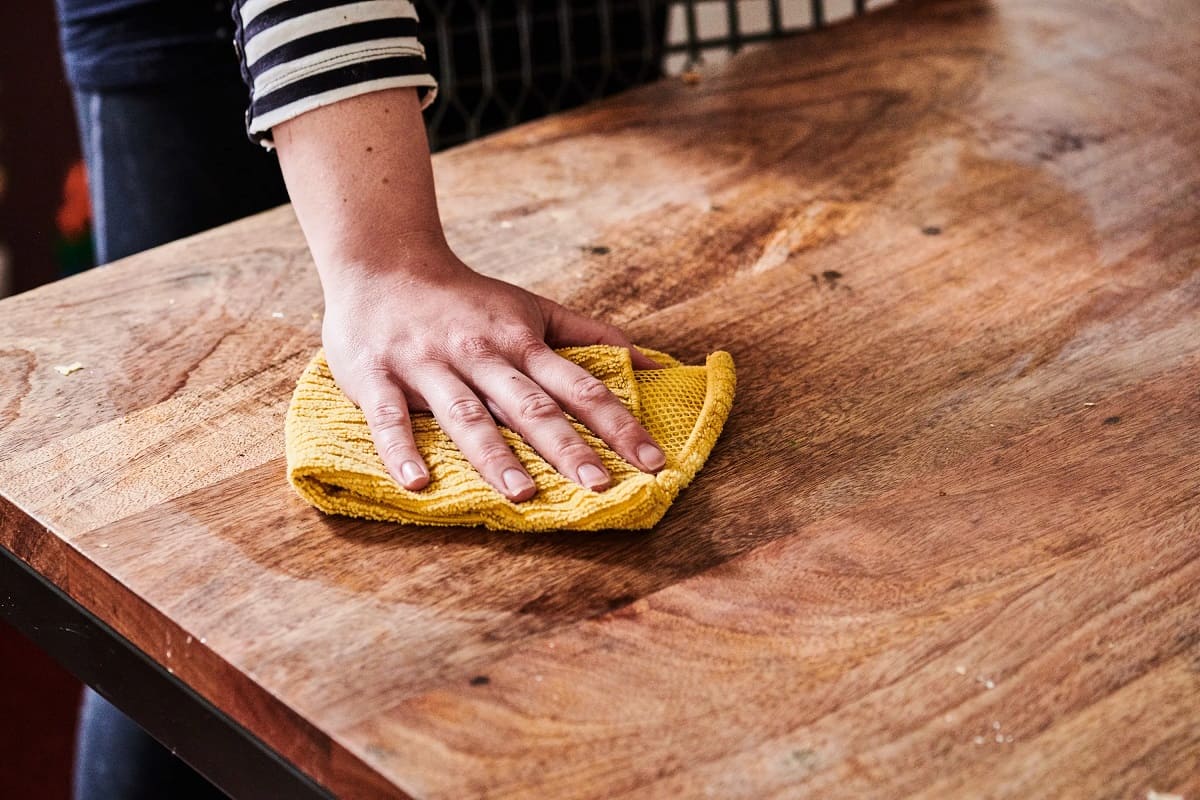

Tableware
How Can You Clean A Wooden Dining Table?
Modified: December 7, 2023
Learn how to effectively clean your wooden dining table and keep it looking its best. Discover the best products and techniques for caring for your tableware.
(Many of the links in this article redirect to a specific reviewed product. Your purchase of these products through affiliate links helps to generate commission for Storables.com, at no extra cost. Learn more)
Introduction
A wooden dining table is not just a piece of furniture; it’s the centerpiece of your dining area, a gathering place for family meals and social gatherings. To keep it looking beautiful and extending its lifespan, regular cleaning is crucial. However, cleaning a wooden dining table requires some knowledge and specific techniques to prevent damaging the wood finish.
In this article, we will explore the importance of cleaning a wooden dining table and provide you with a comprehensive guide on how to clean and maintain it properly. By following these steps, you can ensure your table remains pristine and retains its natural beauty.
Let’s dive in!
Key Takeaways:
- Regular cleaning of a wooden dining table is crucial for hygiene, preserving the wood, enhancing aesthetics, preventing damage, and creating a welcoming atmosphere for memorable meals and gatherings.
- To clean a wooden dining table, gather supplies like a soft cloth, mild dish soap, white vinegar, and olive oil for polishing. Follow a step-by-step process, including clearing the table, removing dust, treating stains, and regular maintenance.
Read more: How To Properly Clean Wooden Dining Chairs?
Importance of Cleaning a Wooden Dining Table
Regular cleaning of your wooden dining table is not only essential for hygiene but also for preserving its appearance and durability. Here are a few reasons why cleaning your wooden dining table is important:
1. Maintaining Hygiene:
As a surface where you eat, it’s vital to keep your dining table clean to prevent the buildup of dust, dirt, and food particles. Regular cleaning helps to eliminate bacteria, germs, and allergens, ensuring a safe and healthy environment for you and your family.
2. Preserving the Wood:
A wooden dining table is an investment, and proper cleaning helps prevent damage and extend its lifespan. Neglecting cleaning can lead to the accumulation of dirt and grime, which can scratch and wear down the wood surface over time. Regular cleaning helps maintain the original beauty of the wood and prevents the need for costly repairs or replacements.
3. Enhancing Aesthetics:
A clean and well-maintained wooden dining table adds elegance and charm to your dining area. By regularly cleaning the table, you can remove stains, watermarks, and fingerprints that can detract from its visual appeal. This not only improves the overall aesthetics of your dining space but also creates a pleasant dining experience for you and your guests.
Read more: How Can You Clean Fabric Dining Room Chairs?
4. Preventing Damage:
Spills and stains are inevitable when it comes to a dining table. However, prompt and proper cleaning can prevent them from penetrating the wood and causing permanent damage. By removing spills quickly and using appropriate cleaning techniques, you can protect the wood finish and prevent staining, warping, or discoloration.
5. Creating a Welcoming Atmosphere:
A clean dining table sets the stage for memorable meals and enjoyable gatherings. By regularly cleaning and maintaining your wooden dining table, you create a welcoming atmosphere in your home. It shows that you care about the details and take pride in your living space, making it a more inviting place for family and friends to gather.
Now that we understand the importance of cleaning a wooden dining table, let’s move on to the supplies you’ll need for the cleaning process.
Supplies Needed
Before you begin cleaning your wooden dining table, gather the following supplies:
1. Soft Microfiber Cloth:
A soft microfiber cloth is essential for dusting and wiping down the table’s surface. It is gentle on the wood and helps prevent scratching or damaging the finish.
Read more: How To Protect A Wooden Dining Table
2. Mild Dish Soap:
Choose a mild dish soap that is free from harsh chemicals and additives. This soap will be used to remove any grease or food residues on the table.
3. Warm Water:
Warm water will be used alongside the mild dish soap for general cleaning purposes. It helps to loosen dirt and grime and makes it easier to clean the table’s surface.
4. White Vinegar:
White vinegar is an excellent natural cleaner for removing stains and disinfecting surfaces. It is safe to use on wooden surfaces and helps to restore shine to the table.
5. Olive Oil or Beeswax Polish:
After cleaning, you’ll want to give your wooden dining table a nice polish. Olive oil or beeswax polish works well to nourish the wood and protect its natural beauty.
Read more: How Can You Construct A Dining Room Table?
6. Soft Bristle Brush:
A soft-bristle brush or toothbrush can be used to gently scrub away stubborn stains or dirt in hard-to-reach areas such as corners or wood carvings.
7. Furniture Wax:
If your wooden dining table has a wax finish, you may need to have furniture wax on hand to maintain the protective layer and enhance the shine of the wood.
Once you’ve gathered all the necessary supplies, you’re ready to start cleaning your wooden dining table. Let’s move on to the step-by-step process.
Step 1: Clearing the Table
Before you begin the cleaning process, it’s important to clear the table of any objects, decorations, or tableware. This step ensures that you have unobstructed access to the entire surface of the table and prevents any accidental damage or knocking over of items during the cleaning process.
Here’s how to clear the table:
1. Remove Tableware:
Start by removing any plates, glasses, utensils, or other tableware from the dining table. Place them aside in a safe and designated area, such as the kitchen counter or a separate table.
Read more: How Can You Select Suitable Dining Chairs?
2. Take Away Decorations:
If your table is adorned with any decorative items such as flowers, candles, or centerpieces, carefully remove them and set them aside. Be cautious of any delicate or fragile decorations that may require extra care and attention.
3. Clean Up Clutter:
Next, clear the table of any extra clutter such as papers, magazines, or other belongings. Put them away in their designated places to ensure a clear workspace for the cleaning process.
4. Use Caution with Electronics:
If you have any electronic devices on the table, such as laptops or tablets, carefully disconnect and remove them. Electronics should be stored safely and kept away from liquids during the cleaning process.
5. Secure Chairs:
If your table has chairs or seating around it, make sure to secure them by pushing them in or removing them temporarily. This will prevent any accidental tripping or obstruction while you clean the table.
By clearing the table, you ensure that the cleaning process is efficient and that your belongings are protected. With a clean and emptied surface, you’re ready to move on to the next step: removing dust and debris.
Step 2: Removing Dust and Debris
After clearing the table, it’s time to remove any dust, dirt, or debris that may have accumulated on the surface. Dust particles can scratch the wood finish if not properly removed, so it’s important to start the cleaning process by gently dusting off the table.
Here’s how to remove dust and debris from your wooden dining table:
1. Start with a Dry Microfiber Cloth:
Using a soft microfiber cloth, gently wipe the entire surface of the table to remove loose dust. Make sure to cover the entire area, including the edges and corners.
2. Pay Attention to Grooves and Carvings:
If your dining table has intricate grooves or carvings, use a soft-bristle brush or toothbrush to remove any dust or debris hiding in those areas. Be gentle when brushing to avoid scratching or damaging the wood.
3. Use a Vacuum Cleaner (Optional):
If your dining table has difficult-to-reach areas or is heavily covered in dust, you may consider using a vacuum cleaner with a soft brush attachment. This can help in sucking up the dust particles more effectively and efficiently.
Read more: How To Clean A Wooden Coffee Table
4. Repeat if Necessary:
If you notice that there is still residual dust or debris on the table after the initial dusting, go over the surface again with a clean microfiber cloth to ensure a thorough clean.
Removing dust and debris from your wooden dining table is an important step to prevent scratches and ensure a clean starting point for the rest of the cleaning process. Once you’re satisfied with the removal of dust, you’re ready to move on to the next step: cleaning the surface.
Step 3: Cleaning the Surface
Now that you’ve cleared the table and removed any dust and debris, it’s time to clean the surface of your wooden dining table. This step will help remove any stains, grease, or residue that may have accumulated over time.
Here’s how to clean the surface of your wooden dining table:
1. Create a Cleaning Solution:
In a bowl or bucket, mix a small amount of mild dish soap with warm water. The ratio should be approximately 1 tablespoon of dish soap to 1 quart of water. Avoid using excessive soap, as it can leave behind a residue.
2. Dampen a Soft Cloth:
Dip a soft microfiber cloth into the cleaning solution and wring out any excess liquid. The cloth should be damp, but not soaking wet, to prevent water from seeping into the wood.
3. Wipe the Surface:
Gently wipe the entire surface of the table with the damp cloth, making sure to cover all areas. Work in small sections, applying light pressure, and follow the grain of the wood for the best results.
4. Pay Attention to Stuck-on Stains:
For stubborn stains, you may need to let the damp cloth sit on the stain for a few minutes to loosen it. Then, gently rub the affected area in a circular motion until the stain lifts. Avoid using excessive force, as it can damage the wood.
5. Rinse with Clean Water:
After cleaning the table with the soapy solution, dampen a fresh cloth with clean water and wipe the surface again to remove any soap residue. This step ensures that no soap remains on the wood, which can dull the finish over time.
6. Dry the Surface:
With a dry and clean microfiber cloth, carefully and thoroughly dry the surface of the table to prevent any moisture absorption by the wood. Make sure there is no standing water left on the surface to avoid any potential damage.
By following these steps, you’ll effectively clean the surface of your wooden dining table, leaving it ready for the next step: treating stains, if necessary.
Step 4: Treating Stains
Even with regular cleaning, stains can sometimes find their way onto your wooden dining table. Whether it’s a food spill, water ring, or ink mark, addressing stains promptly is crucial to prevent them from becoming permanent. In this step, we’ll guide you on how to treat different types of stains on your wooden dining table.
Here’s what you need to know about treating stains on your wooden dining table:
1. Food and Beverage Stains:
For fresh food or beverage stains, gently blot the area with a clean, damp cloth to absorb as much of the liquid as possible. Avoid rubbing the stain, as it can spread and further penetrate the wood. If the stain persists, create a paste by mixing baking soda and water, and gently apply it to the stain. Leave the paste on for a few minutes, then wipe it away with a clean, damp cloth.
2. Water Rings:
Water rings are caused by moisture penetrating the wood finish. To remove them, apply a small amount of non-gel toothpaste or petroleum jelly to the water ring. Gently rub the area with a soft cloth in a circular motion, moving with the grain of the wood. Wipe away any residue and polish the area with furniture wax or olive oil.
3. Ink or Permanent Marker Stains:
If you accidentally end up with ink or permanent marker stains on your wooden dining table, don’t panic. Dampen a cloth with isopropyl alcohol and gently dab the stain, without rubbing too vigorously. Be cautious, as alcohol may cause the finish to fade, so spot test in an inconspicuous area first. Once the stain is removed, clean the area with a mild dish soap and water solution, rinse, and dry thoroughly.
4. Heat or Burn Marks:
Heat or burn marks can be challenging to remove without professional intervention. However, you can attempt to lighten them by gently buffing the area with fine-grade steel wool soaked in lemon oil. Follow the grain of the wood and apply light pressure. After buffing, wipe away any residue and apply furniture wax to restore shine.
Remember, always test any cleaning solution or method on a small, inconspicuous area of your wooden dining table before applying it to the entire surface. This will help ensure that it doesn’t cause any damage or discoloration.
With the stains treated, it’s time to move on to the final step: polishing and maintaining the table’s appearance.
Step 5: Polishing and Maintaining the Table
After cleaning and treating any stains, it’s important to polish and maintain the appearance of your wooden dining table. Polishing not only enhances the natural beauty of the wood but also helps protect the surface and keep it looking its best over time. Follow these steps to polish and maintain your table:
1. Choose the Right Polish:
Select a suitable polish for your specific type of wood finish. Look for polishes made specifically for wooden furniture that do not contain silicones or waxes that can build up and leave a residue. Beeswax or olive oil-based polishes are often recommended for their gentle and nourishing properties.
2. Apply a Thin Coat of Polish:
Dab a small amount of polish onto a clean, soft cloth or directly onto the table’s surface. Start by applying a thin, even coat of polish, working in the direction of the wood grain. Avoid applying excessive polish as it may leave streaks or buildup.
3. Buff the Surface:
Using a separate clean cloth, gently buff the surface of the table in a circular motion. This helps distribute the polish evenly and brings out the natural shine of the wood. Continue buffing until the entire surface has a smooth and lustrous appearance.
4. Focus on High-Traffic Areas:
Pay extra attention to high-traffic areas such as the middle section of the table or areas prone to spills and stains. These areas may require additional polishing to restore their shine and protect them from future damage.
5. Regular Maintenance:
To maintain the beauty of your wooden dining table, establish a regular cleaning and maintenance routine. Wipe down the table with a dry or slightly dampened cloth after each meal to remove any spills or crumbs. Avoid placing hot or wet items directly on the table, and use coasters or protective pads under dishes and glasses.
6. Periodic Reapplication of Polish:
Over time, the polish on your table may wear off or lose its shine. Periodically, reapply polish to restore the protective layer and enhance the wood’s appearance. Follow the manufacturer’s instructions for the specific polish you’re using.
By regularly polishing and maintaining your wooden dining table, you can ensure that it remains beautiful and protected for years to come.
Congratulations! You’ve successfully cleaned and polished your wooden dining table using the step-by-step guide provided in this article. By following these steps regularly, your table will stay in optimal condition, creating a welcoming and elegant space for your dining experiences.
Remember to take care of your table, and it will continue to enchant you and your guests for years to come.
Conclusion
Cleaning and maintaining a wooden dining table is essential for its longevity, appearance, and overall hygiene. By following the steps outlined in this comprehensive guide, you can effectively clean your table and ensure its natural beauty is preserved for years to come.
We started by emphasizing the importance of regular cleaning to maintain hygiene, preserve the wood, enhance aesthetics, prevent damage, and create a welcoming atmosphere in your dining area.
Next, we provided a list of supplies needed, including a soft microfiber cloth, mild dish soap, warm water, white vinegar, olive oil or beeswax polish, a soft bristle brush, and furniture wax. These supplies are essential for the cleaning process and ensuring the proper care of your wooden dining table.
We then delved into the step-by-step cleaning process, including clearing the table of any objects or clutter, removing dust and debris with a soft cloth, creating a cleaning solution with mild dish soap and warm water, and gently wiping the entire surface of the table.
Additionally, we covered how to treat different types of stains, including food and beverage stains, water rings, ink or permanent marker stains, and heat or burn marks. It’s important to address stains promptly and use appropriate methods to prevent them from becoming permanent or causing further damage.
Finally, we discussed the importance of polishing and maintaining the table’s appearance. We highlighted the steps for choosing the right polish, applying it in a thin coat, buffing the surface, focusing on high-traffic areas, and establishing a regular maintenance routine to keep your table looking its best.
By following these steps and incorporating regular maintenance into your cleaning routine, you can ensure that your wooden dining table remains pristine, inviting, and a focal point of your dining area.
So, roll up your sleeves, gather your supplies, and give your wooden dining table the care it deserves. It will reward you with many years of beauty, functionality, and memories shared around its elegant surface.
Frequently Asked Questions about How Can You Clean A Wooden Dining Table?
Was this page helpful?
At Storables.com, we guarantee accurate and reliable information. Our content, validated by Expert Board Contributors, is crafted following stringent Editorial Policies. We're committed to providing you with well-researched, expert-backed insights for all your informational needs.
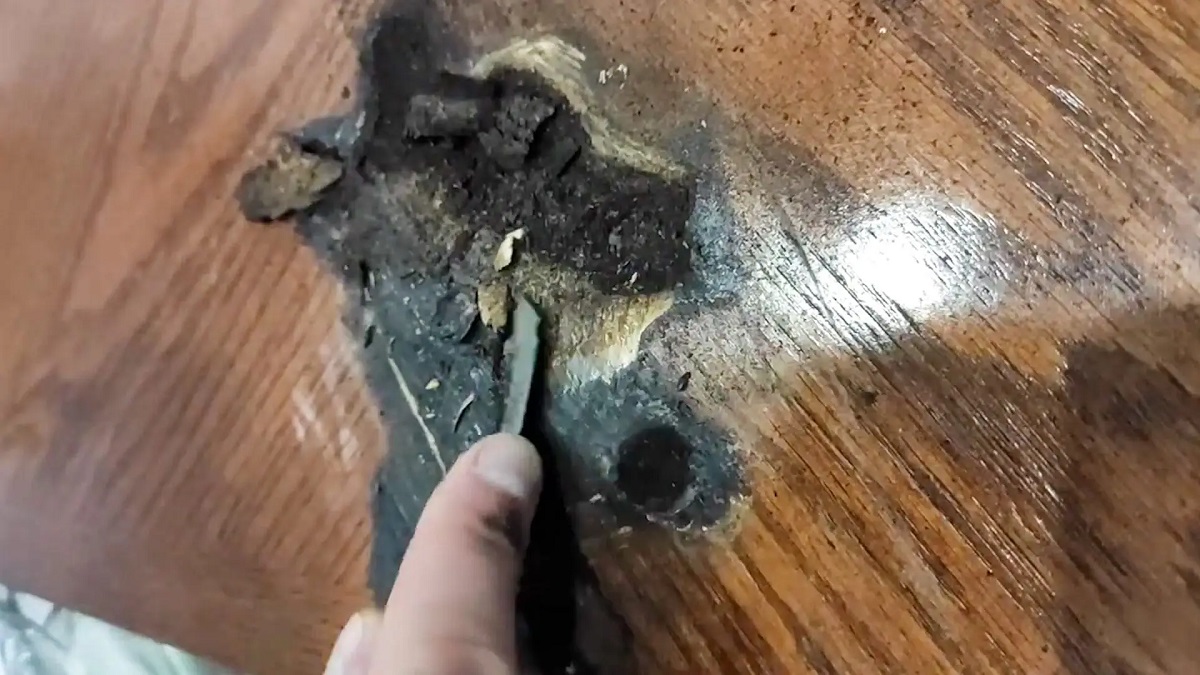
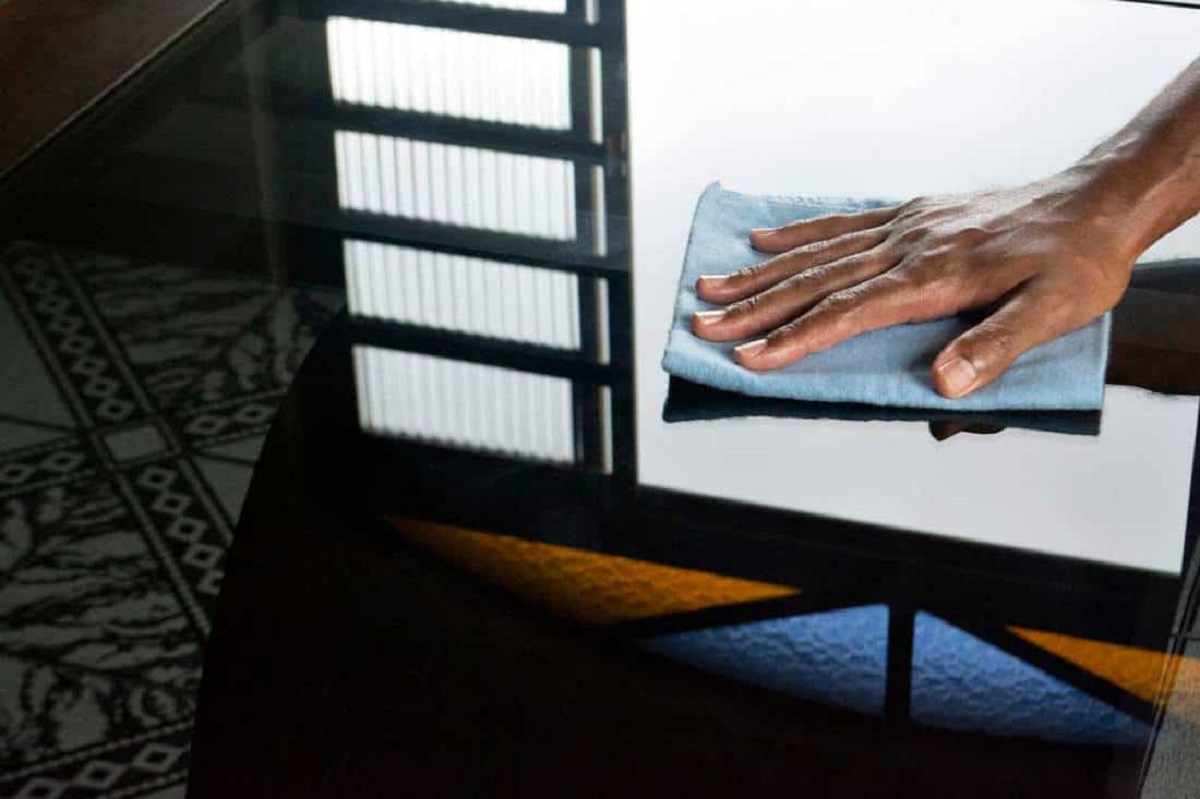
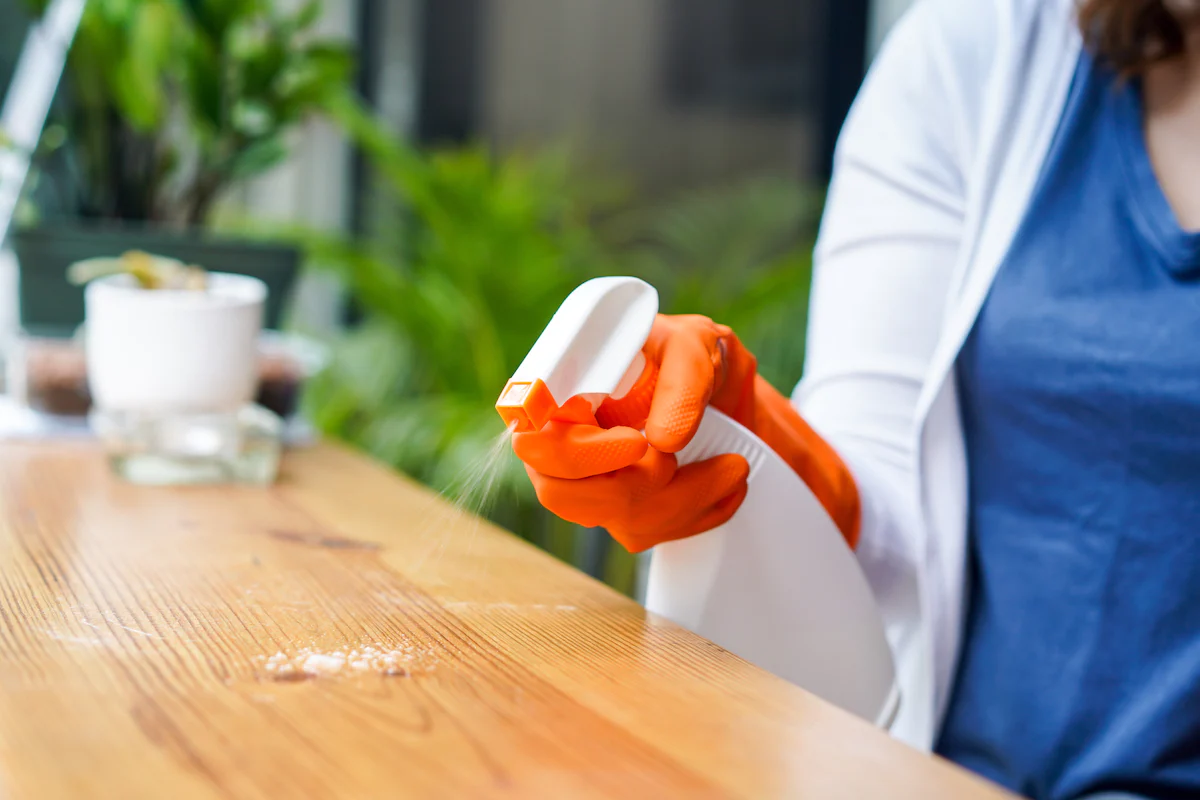
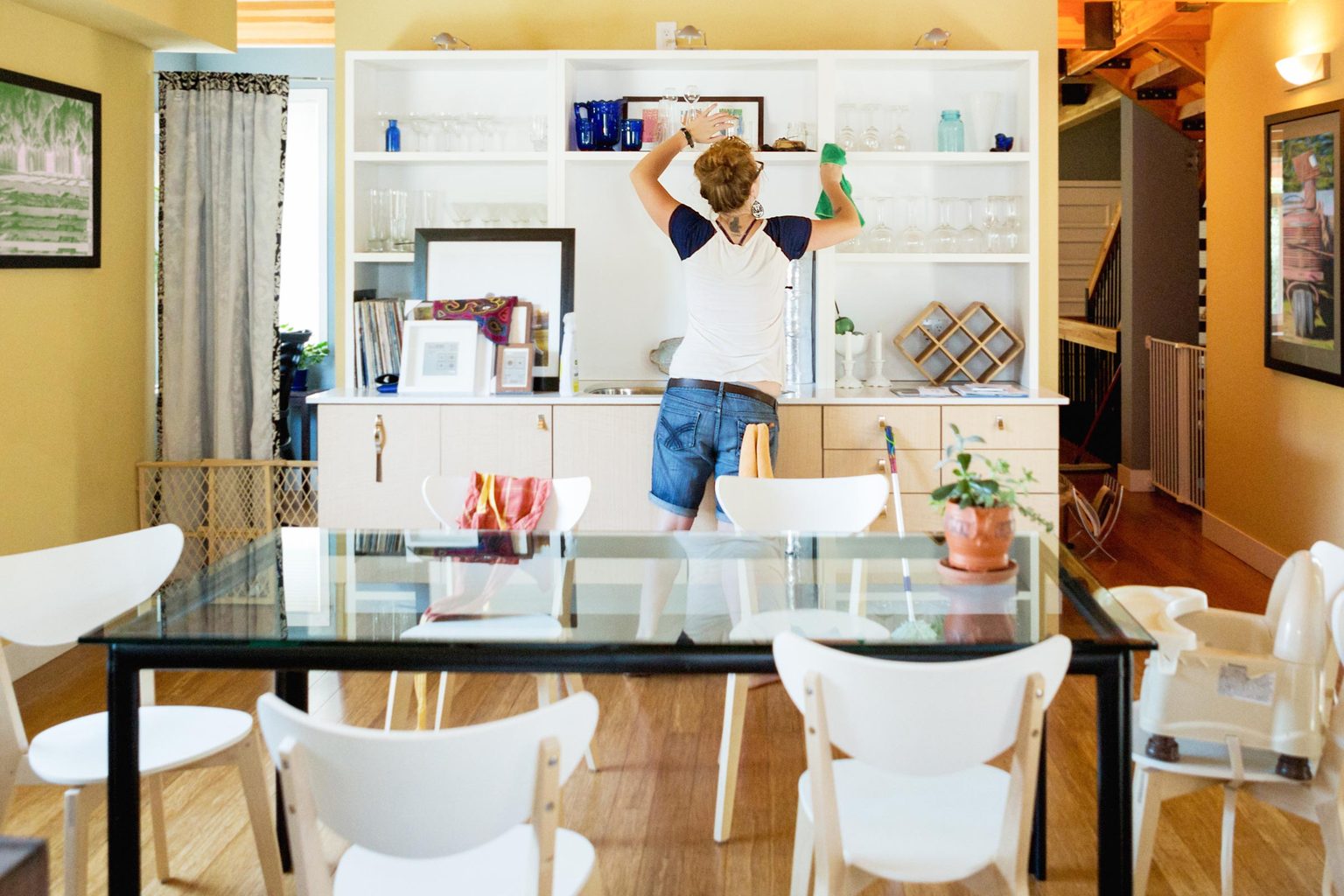

0 thoughts on “How Can You Clean A Wooden Dining Table?”